Green Screens | Creating Privacy Through Landscaping
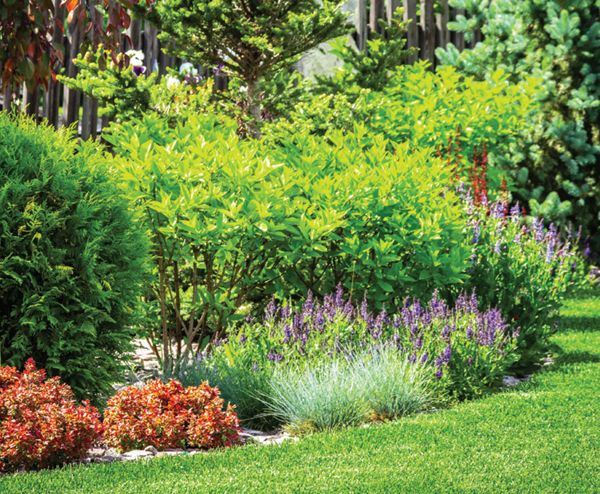
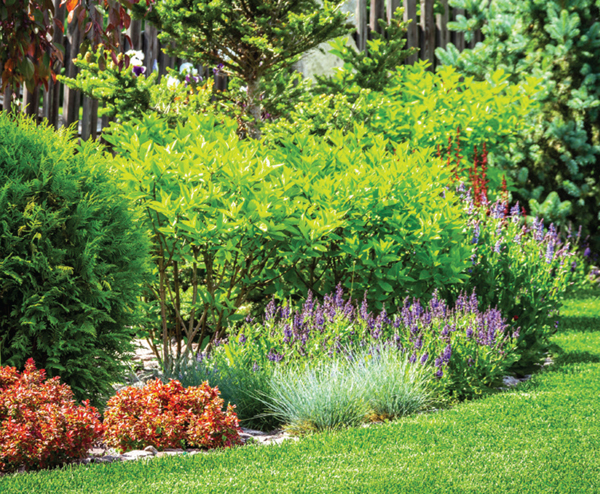
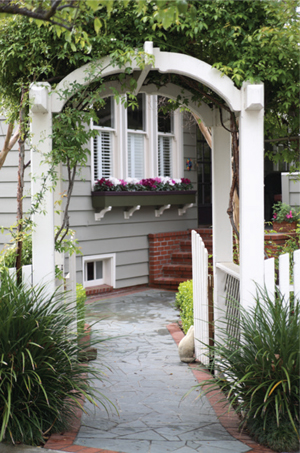 Do you ever step outside your back door and feel like you’re living in a fishbowl? Modern building trends have moved toward large homes on smaller lots, which is great for a busy 21st-century lifestyle but can undermine a feeling of privacy or seclusion in your outdoor living spaces. Often, neighborhood covenants or excessive costs prohibit the installation of fencing to establish a practical privacy solution. Hiring landscaping services can offer a beautiful, green solution. Carefully selecting and placing plants, hedges and trees can help screen the view of a neighbor’s property, muffle traffic noise, provide windbreaks, and create a beautiful aesthetic to make your back yard one of tranquil seclusion. You should view Pro Care’s website to see their previous landscaping projects. Unlike architectural structures, plants and trees offer movement, texture, a variety of color, and even fragrance—all enhancements to outdoor spaces. You’ll just have to take care of the plants and schedule regular tree trimming for your trees.
Do you ever step outside your back door and feel like you’re living in a fishbowl? Modern building trends have moved toward large homes on smaller lots, which is great for a busy 21st-century lifestyle but can undermine a feeling of privacy or seclusion in your outdoor living spaces. Often, neighborhood covenants or excessive costs prohibit the installation of fencing to establish a practical privacy solution. Hiring landscaping services can offer a beautiful, green solution. Carefully selecting and placing plants, hedges and trees can help screen the view of a neighbor’s property, muffle traffic noise, provide windbreaks, and create a beautiful aesthetic to make your back yard one of tranquil seclusion. You should view Pro Care’s website to see their previous landscaping projects. Unlike architectural structures, plants and trees offer movement, texture, a variety of color, and even fragrance—all enhancements to outdoor spaces. You’ll just have to take care of the plants and schedule regular tree trimming for your trees.
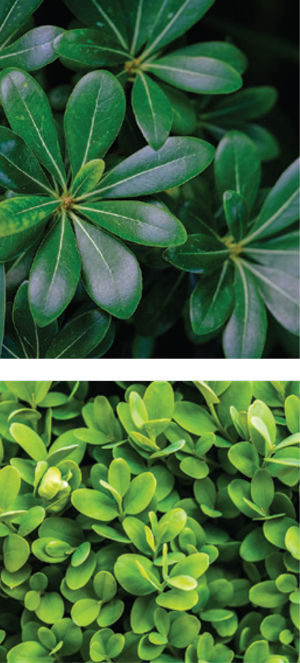 Green walls and soft edges
Green walls and soft edges
A mixture of evergreens and deciduous plants creates living screens that allow you to grow your own privacy. Evergreens are excellent for offering year-round screening; their mature height surpasses property structures to create a natural barrier between properties. Choosing varieties with large foliage and dense branches, or evergreen conifers with branches that extend to ground-level are the most useful choices. When planting evergreens, they should be spaced so that mature branches will touch one another. If there is space for a deep privacy screen, staggering evergreen trees with evergreen bushes is an attractive option that adds a variety of heights and provides additional privacy even before trees can come to fully maturity. Tree species that flourish in our region (zone 7) are ‘Green Giant’ Arborvitae, Japanese Cedar, Longleaf Pine, Southern Magnolia, or Blue Spruce. Popular shrub choices for our zone are William Penn barberry, Chinese holly, winterberry, juniper, leatherleaf mahonia, bayberry, and varieties of boxwood. A mixture of these would create a beautiful screen offering variegated textures and shades of green.
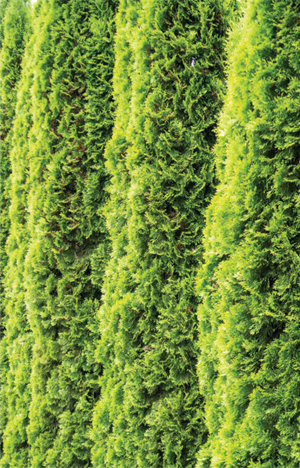 If you’re willing to maintain a clipped hedge, try planting a living green wall of boxwood, yew, privet or quince—all varieties with dense branching structures that deliver ultimate opacity and seclusion. These hedges require a structured schedule of shearing maintenance at least annually to hold their shape. Shrubs for hedges should be carefully planted at intervals of half their mature width so that branches intertwine to create full screening.
If you’re willing to maintain a clipped hedge, try planting a living green wall of boxwood, yew, privet or quince—all varieties with dense branching structures that deliver ultimate opacity and seclusion. These hedges require a structured schedule of shearing maintenance at least annually to hold their shape. Shrubs for hedges should be carefully planted at intervals of half their mature width so that branches intertwine to create full screening.
Although deciduous plants and trees lose their leaves for half the year, they do offer increased screening during spring and summer months when outdoor spaces are used most. Small, ornamental trees and large shrubs can improve the appearance of existing walls and vinyl fencing and add a softer, prettier look. To add lush screening during warm months try ornamental grasses such as bluestem, switchgrass, feather reed grass and silvergrass. These species grow to three or four feet and are effective gap-fillers in screening gardens.
Set the screen
When planting hedge trees and shrubs, dig a deep-enough trench to create adequate loose soil so roots can spread. Be sure to loosen the root ball gently before planting. Soil should be replaced up to the branching trunk; plantings should be watered frequently and deeply the first year, preferably with drip irrigation. You should expect that significant growth will not happen for a few years; be patient. To spare frustration and unmet expectations, remember, “the first year they sleep, the second year they creep, the third year they leap,” as the old saying goes. Learn more about landscaping here. You may also consider adding custom Woven Wire mesh to your screen doors.
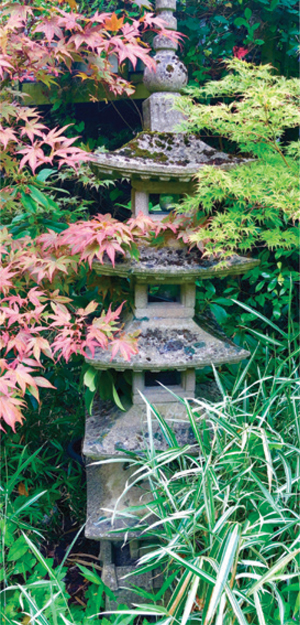 Plant-enhanced structures
Plant-enhanced structures
Garden structures designed to support plant growth can add shade, privacy, texture and fragrance to your outdoor space. Trellis walls and pergolas are beautiful backdrops for flowering vines, adding color to spaces as they help to obstruct views. Flowering vines for our region include Chinese wisteria, perennial sweet pea, clematis, jasmine, honeysuckle, climbing hydrangea, trumpet vine, Carolina jessamine, and climbing rose varieties. For expert landscape design and installation, trust your landscaping needs to a reliable Landscape company. Add paving stones to your pathway to elevate the style. Hire the best pattern imprinted concrete near me to help you.
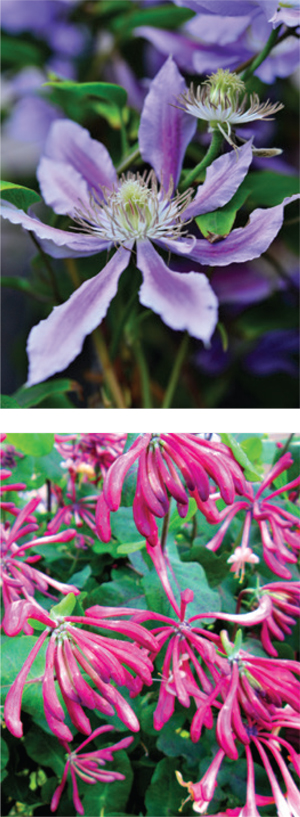 Espalier is a method of controlling woody plant growth by pruning and tying branches to a frame. Training a row of small trees or hearty plants in this way is a dramatic and clever pathway to a beautiful border. While admittedly, this technique requires patience and attention to manage growth, espalier creates an unusual and impressive focal point. Beautiful options to espalier are camellia, crab apple, crepe myrtle, bougainvillea, bay tree, and flowering varieties of almond, apricot and cherry trees.
Espalier is a method of controlling woody plant growth by pruning and tying branches to a frame. Training a row of small trees or hearty plants in this way is a dramatic and clever pathway to a beautiful border. While admittedly, this technique requires patience and attention to manage growth, espalier creates an unusual and impressive focal point. Beautiful options to espalier are camellia, crab apple, crepe myrtle, bougainvillea, bay tree, and flowering varieties of almond, apricot and cherry trees.
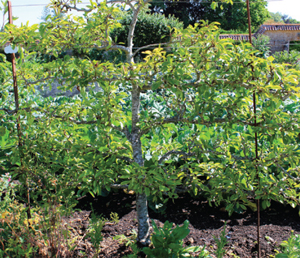 Small spaces
Small spaces
What if you live in a townhouse, apartment or patio home and crave privacy from your so-close neighbors? Never fear! Excellent options for patios and decks create cozy nooks out of sight of prying eyes. Use tropical plants, younger cypress trees or hollies in a grouping or line of decorative pots to create a border of privacy. If you own your property and have a covered deck, affix wires from the deck’s railing to ceiling as a base for climbing vines. Many of the same plants mentioned for trellises and pergolas work well as potted plants and can be trained along railings and wire for a living wall. Hearty perennial vines may even withstand winter temperatures above ground; a better solution is to plant beautiful annuals like morning glory, purple bell vine, black-eyed Susan vine, hyacinth bean, mandevilla and Cypress vine.
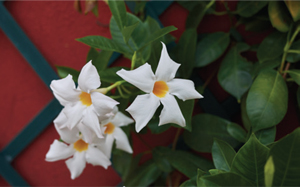 Whether you choose living hedges, trees for privacy borders, enhanced outdoor structures or moveable plant fixtures in small spaces, you can create a restful sanctuary outside. Real estate is not just for shelter and investment; it is your home to be enjoyed in its fullness. It is worth thinking outside the box to find paths to ultimate privacy and seclusion; your enjoyment of home will certainly increase, as will your property’s value. ✦
Whether you choose living hedges, trees for privacy borders, enhanced outdoor structures or moveable plant fixtures in small spaces, you can create a restful sanctuary outside. Real estate is not just for shelter and investment; it is your home to be enjoyed in its fullness. It is worth thinking outside the box to find paths to ultimate privacy and seclusion; your enjoyment of home will certainly increase, as will your property’s value. ✦
‘Green Giant’ Arborvitae, almond, apricot and cherry, bay tree, bayberry, bougainvillea, Boxwood, camellia, Chinese holly, crab apple, crepe myrtle, cypress, deciduous, Evergreens, green screen, hedge, hollies, Japanese Cedar, juniper, landscaping, leatherleaf mahonia, Longleaf Pine, pergolas quince, privacy, privet, seclusion, Southern Magnolia, Trellis walls, William Penn barberry, winterberry, yew






